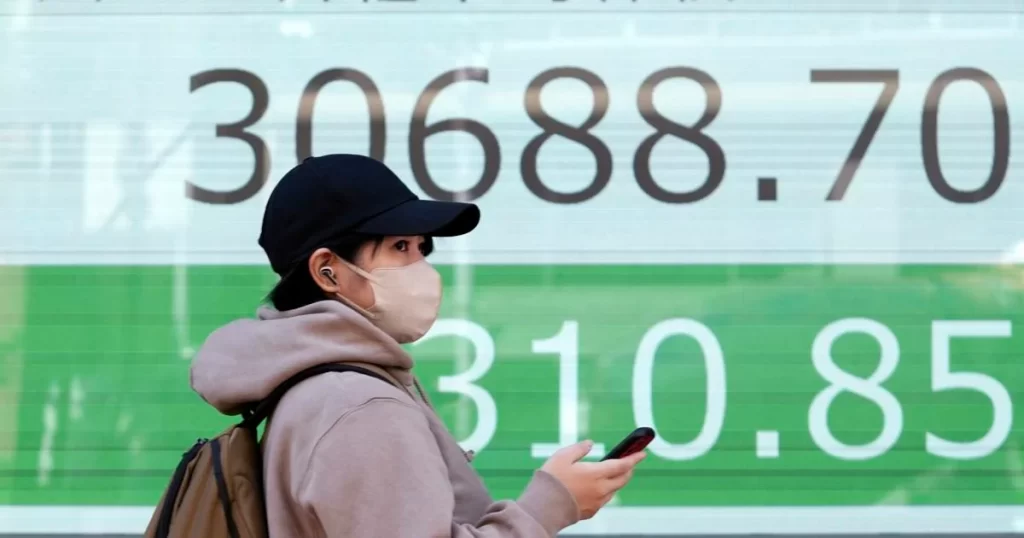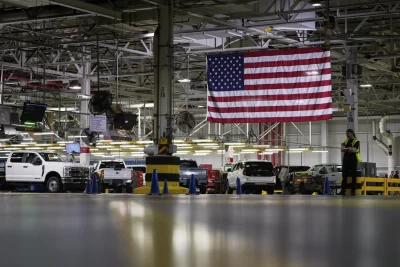
Shares were mixed Tuesday in Asia after Wall Street wobbled to a mixed close as yields on U.S. Treasury bonds fell back after creeping above 5%.
Benchmarks fell in Tokyo, Seoul and Hong Kong but rose in Shanghai, Sydney and Taiwan.
Rapidly rising yields in the bond market that have been pressuring stock prices since the summer seemed set to climb further after the 10-year Treasury briefly topped 5.02% to touch its highest level since 2007.
The S&P 500 quickly slumped 0.8%, but the 10-year yield eventually eased back to 4.84%, down from 4.91% late Friday, as oil prices tumbled to take some pressure off inflation and relax the vise on the stock market.
Early Tuesday, Japan’s benchmark Nikkei 225 fell 1.0% to 30,693.95. Sydney’s S&P/ASX 200 rose 0.1% to 6,852.10. South Korea’s Kospi slipped 0.3% to 2,351.04.
Shanghai’s benchmark has fallen to its lowest level in several years as worries over a slump in the property market and a slowing economy in general have led investors to sell off shares.
On Monday, the S&P 500 slipped 0.2% to 4,217.04 and the Dow Jones Industrial Average dropped 0.6%, to 32,836.41.
The Nasdaq composite rose 0.3% to 13,018.33. Lower bond yields tend to most help stocks of companies promising big growth far in the future or those seen as the most expensive. That gave a particular boost to technology and other high-growth stocks.
A 3.8% jump for Nvidia and 0.8% rise for Microsoft were the two strongest forces helping to limit the market’s losses, while most stocks on Wall Street weakened.
Treasury yields help dictate how much investors pay for everything from stocks to corporate bonds to cryptocurrencies. Higher yields also make it more expensive for nearly everyone to borrow money, which puts the brakes on economic growth and adds stress to the entire financial system.
“If bond yields continue to rise relentlessly, something will eventually break,” said Seema Shah, chief global strategist of Principal Asset Management. They already helped cause three high-profile failures of U.S. banks earlier this year.
The 10-year Treasury yield has been been catching up to the overnight interest rate that the Federal Reserve has hiked furiously, up to 5.25%, to try to get inflation under control.







